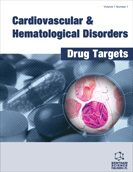Abstract
ATPase-dependent chromatin remodeling complex encompasses a group of evolutionarily conserved proteins that utilize energy derived from ATP hydrolysis to drive nucleosome movement contributing to transcriptional regulation. Brahma-related gene 1 (Brg1) and Brahma (Brm) are the core components of the mammalian remodeling complex. The past decade has witnessed a great expansion in our knowledge regarding the role of Brg1 and Brm in modulating the function of the cardiovascular system (CVS) under both physiological conditions and disease states owing much to the availability of tissue-specific Brg1/Brm-null animals. This review summarizes the current proceedings on how Brg1 and Brm contribute to the morphogenesis within the CVS and importantly, how Brg1 and Brm maintain the homeostasis of adult organisms, the disruption of which bears clear implications in the pathogenesis of such cardiovascular diseases as atherosclerosis and cardiac hypertrophy.
Keywords: Cardiovascular disease, chromatin remodeling, Brg1, Brm, transcriptional regulation, epigenetics, development
Cardiovascular & Hematological Disorders-Drug Targets
Title:Regulatory Role of Brg1 and Brm in the Vasculature: From Organogenesis to Stress-Induced Cardiovascular Disease
Volume: 12 Issue: 2
Author(s): Yong Xu and Fei Fang
Affiliation:
Keywords: Cardiovascular disease, chromatin remodeling, Brg1, Brm, transcriptional regulation, epigenetics, development
Abstract: ATPase-dependent chromatin remodeling complex encompasses a group of evolutionarily conserved proteins that utilize energy derived from ATP hydrolysis to drive nucleosome movement contributing to transcriptional regulation. Brahma-related gene 1 (Brg1) and Brahma (Brm) are the core components of the mammalian remodeling complex. The past decade has witnessed a great expansion in our knowledge regarding the role of Brg1 and Brm in modulating the function of the cardiovascular system (CVS) under both physiological conditions and disease states owing much to the availability of tissue-specific Brg1/Brm-null animals. This review summarizes the current proceedings on how Brg1 and Brm contribute to the morphogenesis within the CVS and importantly, how Brg1 and Brm maintain the homeostasis of adult organisms, the disruption of which bears clear implications in the pathogenesis of such cardiovascular diseases as atherosclerosis and cardiac hypertrophy.
Export Options
About this article
Cite this article as:
Xu Yong and Fang Fei, Regulatory Role of Brg1 and Brm in the Vasculature: From Organogenesis to Stress-Induced Cardiovascular Disease, Cardiovascular & Hematological Disorders-Drug Targets 2012; 12 (2) . https://dx.doi.org/10.2174/1871529X11202020141
| DOI https://dx.doi.org/10.2174/1871529X11202020141 |
Print ISSN 1871-529X |
| Publisher Name Bentham Science Publisher |
Online ISSN 2212-4063 |
 24
24
- Author Guidelines
- Bentham Author Support Services (BASS)
- Graphical Abstracts
- Fabricating and Stating False Information
- Research Misconduct
- Post Publication Discussions and Corrections
- Publishing Ethics and Rectitude
- Increase Visibility of Your Article
- Archiving Policies
- Peer Review Workflow
- Order Your Article Before Print
- Promote Your Article
- Manuscript Transfer Facility
- Editorial Policies
- Allegations from Whistleblowers
- Announcements
Related Articles
-
Treatment of Tachycardia in Hypertension: Where Do We Stand Now?
Current Hypertension Reviews A PHACES Syndrome Unmasked by Propranolol Interruption in a Tetralogy of Fallot Patient: Case Report and Extensive Review on New Indications of Beta Blockers
Current Medicinal Chemistry Role of Copper in Angiogenesis and Its Medicinal Implications
Current Medicinal Chemistry Ethnic and Geographical Differences in Ischaemic Stroke Among Young Adults
Current Vascular Pharmacology Atrial Fibrillation and Chronic Kidney Disease in Hypertension: A Common and Dangerous Triad
Current Vascular Pharmacology Molecular Mechanisms of Inflammation. Anti-Inflammatory Benefits of Virgin Olive Oil and the Phenolic Compound Oleocanthal
Current Pharmaceutical Design The Histone Deacetylase SIRT6: At the Crossroads Between Epigenetics, Metabolism and Disease
Current Topics in Medicinal Chemistry β-Adrenergic Receptor Gene Polymorphisms and its Relationship with Heart Failure
Current Vascular Pharmacology The Risk of Adverse Drug Reactions in Older Patients: Beyond Drug Metabolism
Current Drug Metabolism Disrupting β-Amyloid Aggregation for Alzheimer Disease Treatment
Current Topics in Medicinal Chemistry Protein Phosphatase Inhibition: Structure Based Design. Towards New Therapeutic Agents
Current Pharmaceutical Design Pathophysiology of Myocardial Infarction and Acute Management Strategies
Cardiovascular & Hematological Agents in Medicinal Chemistry Emerging Role of Apelin as a Therapeutic Target in Cancer: A Patent Review
Recent Patents on Anti-Cancer Drug Discovery The Role of the Novel Adipocyte-Derived Protein Adiponectin in Human Disease: An Update
Mini-Reviews in Medicinal Chemistry Current Diagnostic Investigation in Pulmonary Hypertension
Current Respiratory Medicine Reviews Hyperhomocysteinaemia: A Critical Review of Old and New Aspects
Current Drug Metabolism Natural Products as Anti-Invasive and Anti-Metastatic Agents
Current Medicinal Chemistry RAS Inhibition Attenuates Cognitive Impairment by Reducing Blood- Brain Barrier Permeability in Hypertensive Subjects
Current Hypertension Reviews Insulin Treatment and Weight Gain in Type 2 Diabetes: Is Our Knowledge Complete?
Current Nutrition & Food Science Licochalcone B Arrests Cell Cycle Progression and Induces Apoptosis in Human Breast Cancer MCF-7 Cells
Recent Patents on Anti-Cancer Drug Discovery


























